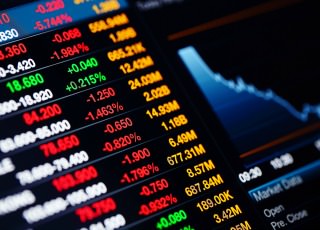CFD trade and the money
In a CFD trade for any underlying asset, money will be involved from opening your account and putting in the required margin to paying the fees and providing the other party with his gains. Keep in mind, that there are no actual exchanges of assets including physical custody and legal ownership of the underlying asset to the trade, which can be commodities, currencies, or shares.

CFD trade and the trading platforms
The trading platform used by the CFD provider determines the monetary aspects of each trade since it allows the client – you, for example – to make the trades. In a typical CFD trading platform, you will open an online account with your chosen CFD provider. The process involves providing your personal details relevant to each CFD trade and depositing money into your account.
You will be provided with online access wherein you can log into your account, place your buy and sell orders, and monitor your account for profits and losses, among others. You can also use the trading platform for other purposes, such as use the research tools and technologies for useful information including the underlying asset’s market performance so far.
Be sure to give the trial offer a try to determine whether you are comfortable using the trading platform offered by the CFD provider.
Fees and charges
Every CFD provider is mandated by law to provide its clients with a Product Disclosure Statement (PDS) containing the terms and conditions of use. In the PDS, the fees and charges including interests and margin requirements should be clearly spelled out. In case of concerns and complaints, you and your CFD provider will refer to the PDS to resolve the issues.
Each CFD provider will have specific fees and charges for each trade so it pays to read the fine print first. The fees and charges may also vary depending on the type of underlying asset, as is the case with shares and currencies.
You may have the benefit of free information including research data that comes with the trade. But check with your CFD provider about other types of information that may come with a premium lest you find your bill getting larger than expected.
Aside from the trade-related fees and charges, your CFD provider may also charge interest on your long positions that were held open overnight. The interest will vary depending on your CFD provider, the type of underlying asset, and the amount, among other factors. You may be charged interest for the full face value of your CFD trade.
Margin requirement
Many people are attracted to CFD trading because of the minimum amount of investment required to make a trade, known as the margin requirement. For example, you can put in 1% of the total value of the underlying asset while your CFD provider covers the rest. Your CFD provider will determine the margin requirement for each type of underlying asset, which can be as high as 5% or as low as 1%.
You should be careful about making a CFD trade because CFD trading means leveraged trading – the potential for gains are high, but the risks for losses are just as high, too.
Related articles
Trading signal service for you!
Understanding a cfd
Introduction to trading platform